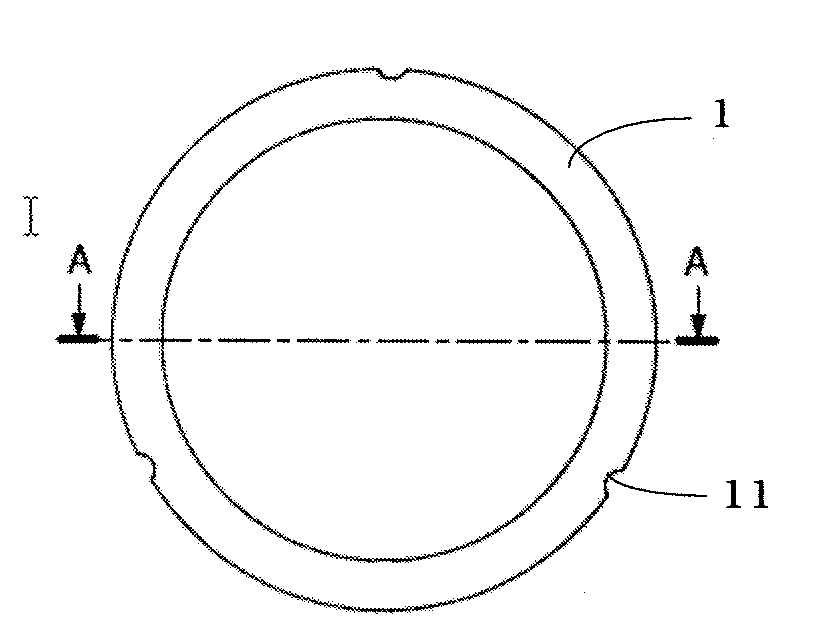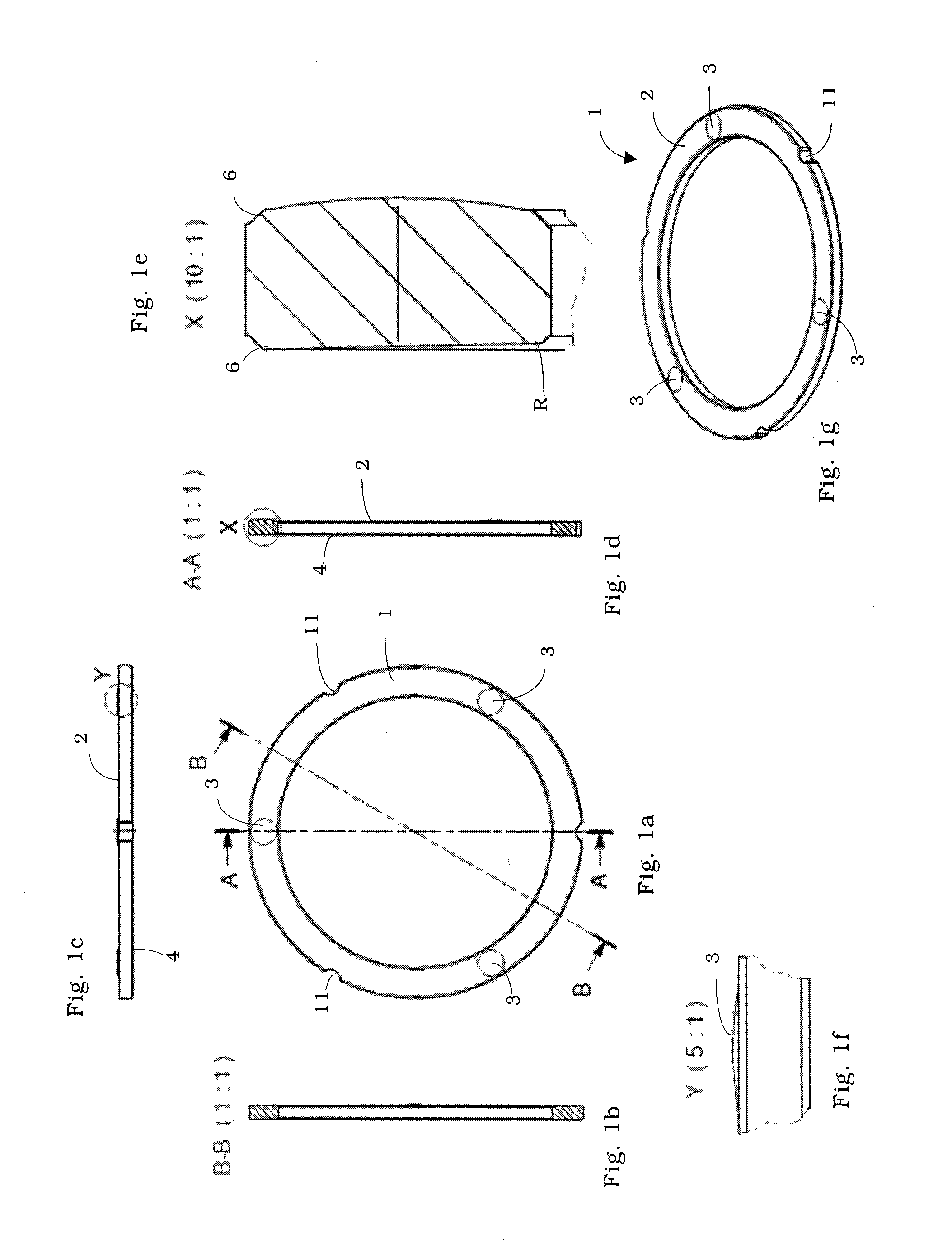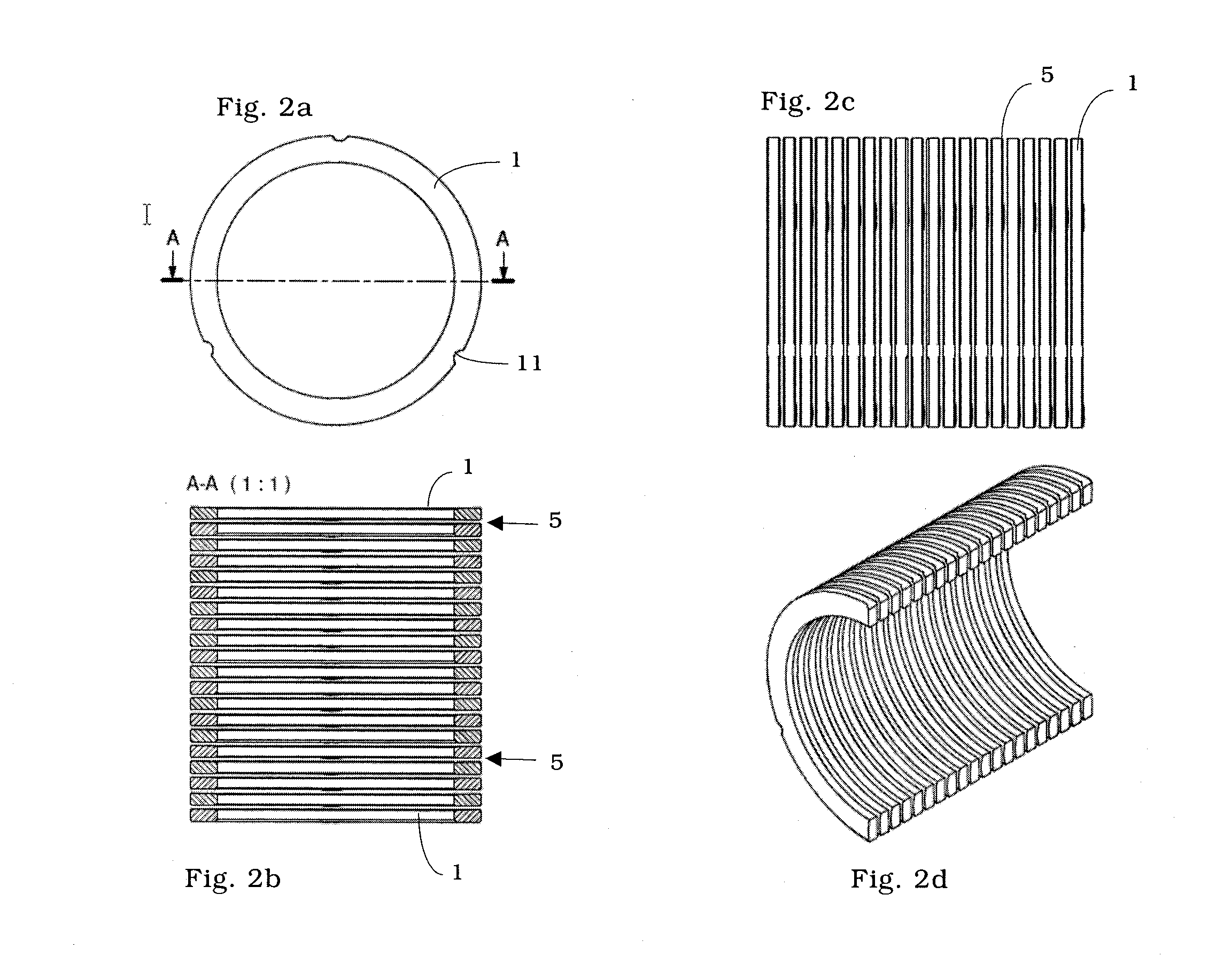Separating device for removing sand and rock particles
a separation device and rock technology, applied in the direction of drinking water installation, borehole/well accessories, construction, etc., can solve the problems of low fracture toughness, low wear resistance, and great wear resistan
- Summary
- Abstract
- Description
- Claims
- Application Information
AI Technical Summary
Benefits of technology
Problems solved by technology
Method used
Image
Examples
example 1
Ceramic Separating Device
[0068]In a design example, the outside diameter of the annular filter discs is 100 mm, the inside diameter 80 mm. The height of the annular discs is 3 mm. The radius R of the spherical axial bearing (see FIG. 1e) is 2000 mm. The annular gap between two neighbouring annular discs is in each case 0.4 mm. The radius of the three spacers, in the form of spherical portions, on the annular discs is 25 mm. The wall thickness of the metal supporting cage is 3 mm (see FIGS. 3b and 3c). The free filter area is 13%.
[0069]The total length of the separating device in the example is 1000 mm; this corresponds to 294 discs with the aforementioned dimensions in the disc stack.
[0070]In the exemplary embodiment, the material SSiC (EKasic® F) is used.
PUM
 Login to View More
Login to View More Abstract
Description
Claims
Application Information
 Login to View More
Login to View More - R&D
- Intellectual Property
- Life Sciences
- Materials
- Tech Scout
- Unparalleled Data Quality
- Higher Quality Content
- 60% Fewer Hallucinations
Browse by: Latest US Patents, China's latest patents, Technical Efficacy Thesaurus, Application Domain, Technology Topic, Popular Technical Reports.
© 2025 PatSnap. All rights reserved.Legal|Privacy policy|Modern Slavery Act Transparency Statement|Sitemap|About US| Contact US: help@patsnap.com



